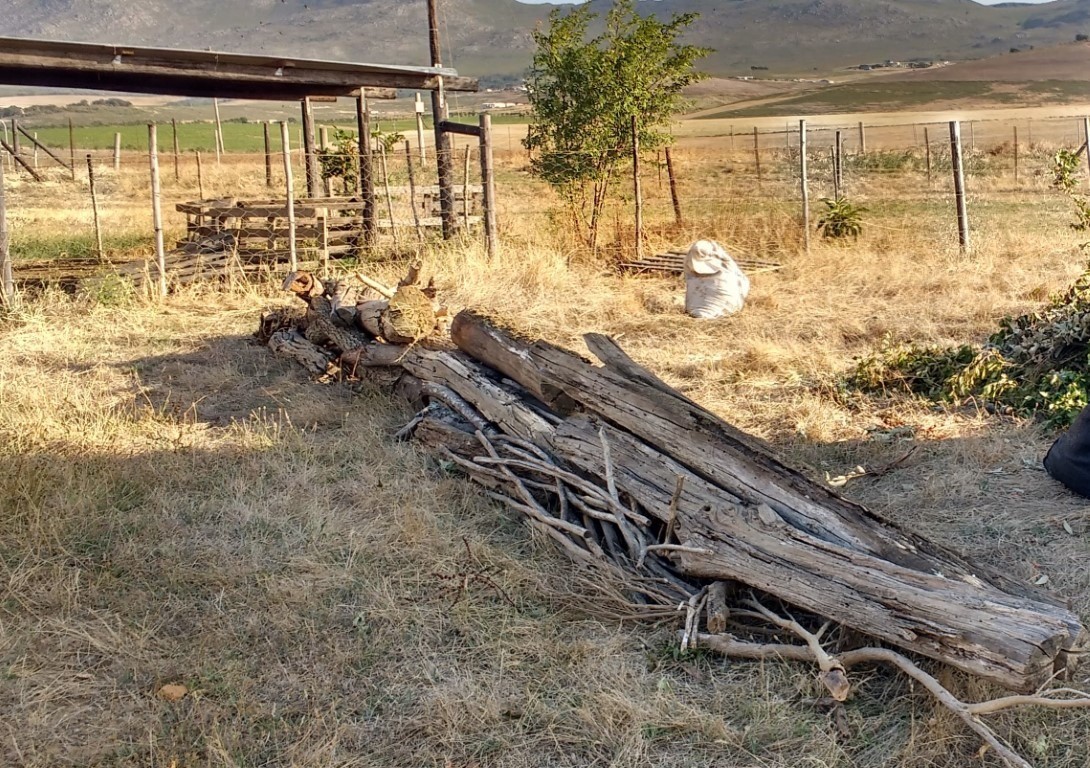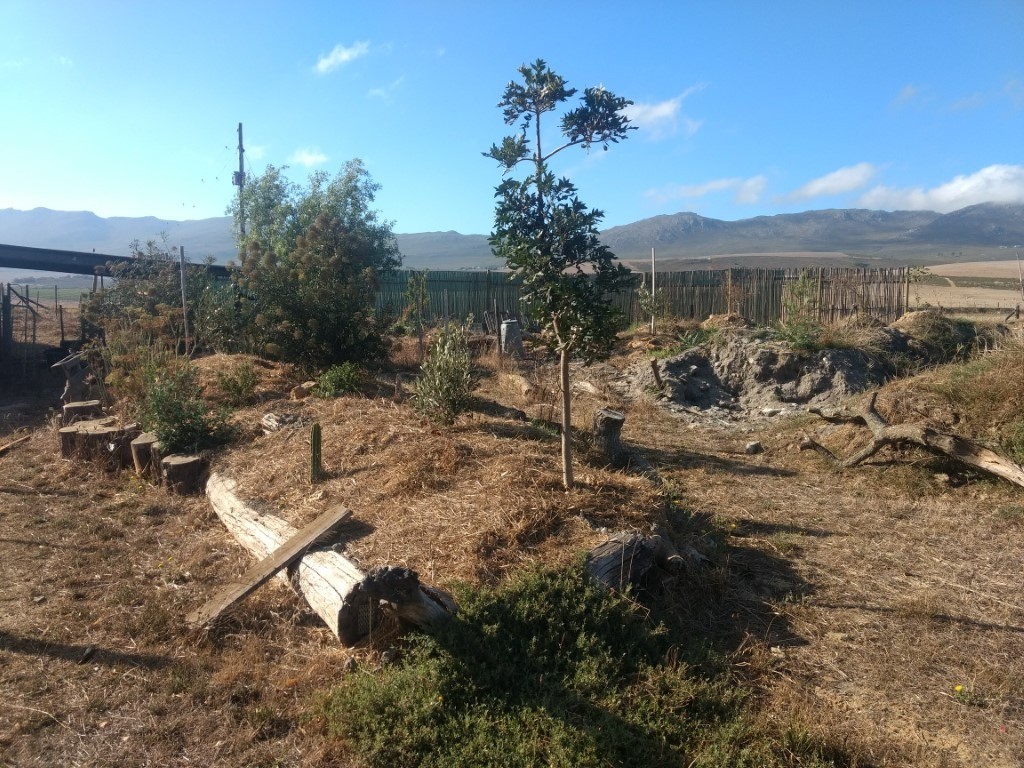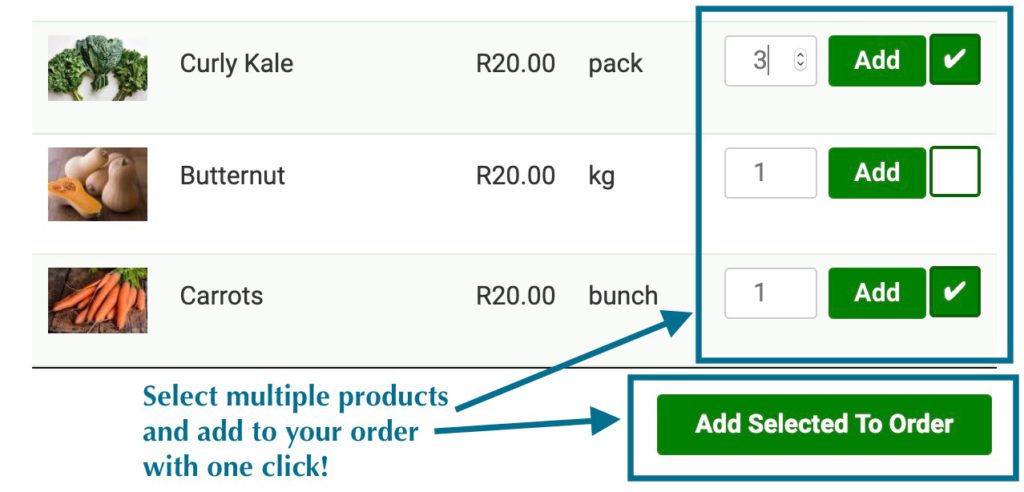Hugelkultur pronounced hoo-gul-culture is quite simply a mound of logs, branches, leaves & soil that is used as a raised bed to grow trees, shrubs or vegetables.
Hugel is an effective way to deal with cleared trees or vegetation, that doesn’t require burning or heavy equipment like chippers. Over years the the organic material breaks down, providing deep aerated soil and an ideal home for worms & beneficial insects. The raised bed works as a giant sponge, soaking up water in wet seasons and drying out slowly over summer.
Building a hugel bed
Start with the biggest logs you have available to create an outline of the future bed. These big logs create a damp & cool microclimate under the soil, and help to contain the bed. Continue to pile on logs, branches & leaves. To avoid getting big openings in the hugel that speed up water loss, you should ensure that big gaps between logs are stuffed with soil or smaller pieces of wood.
A hugel can be as big as you want, or have material for. Generally about 6 foot high in the middle is a good size if space allows.
Cover the mound of vegetation entirely with soil, compost & mulch – filling in all gaps.
You can then plant on the mound right away. A good strategy is to plant saplings of legumous pioneer trees right away – as well as seed the surface with groundcovers and edibles species. The trees and deep rooted perinneals will quickly penetrate throughout the mound with their roots, and the groundcovers will help prevent the hugel drying out.
You may need to do periodic maintenance as the mound subsides over time. Rotting logs inside the mound might collapse, leaving holes. We’ve had bees building hives inside our hugels, as well as other critters moving in. If you’d rather avoid this, then just fill the holes with soil and compost when they appear. Apart from that hugels require very little extra work, they produce their own compost & require minimal irrigation. You can grow edible plants & trees for years on a single hugel bed making them one of the most popular techniques in permaculture in places with abundant waste vegetation or cleared invader species.
Good plant species for planting on Hugels
You’ll want to select plants that have deep and fast growing root systems to stabilize the hugel. Look for plants that grow well in your area in the following categories:
Leguminous trees
Fruit bearing trees such as figs & mulberries
Perinneal fruit bearing bushes
Fast growing ground covers like sweet potato & New Zealand spinach

The base of the hugel bed

Trees and bushes getting established
 With thick groundcovers & mulch the hugel requires no irrigation once established
With thick groundcovers & mulch the hugel requires no irrigation once established
